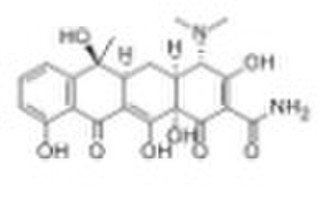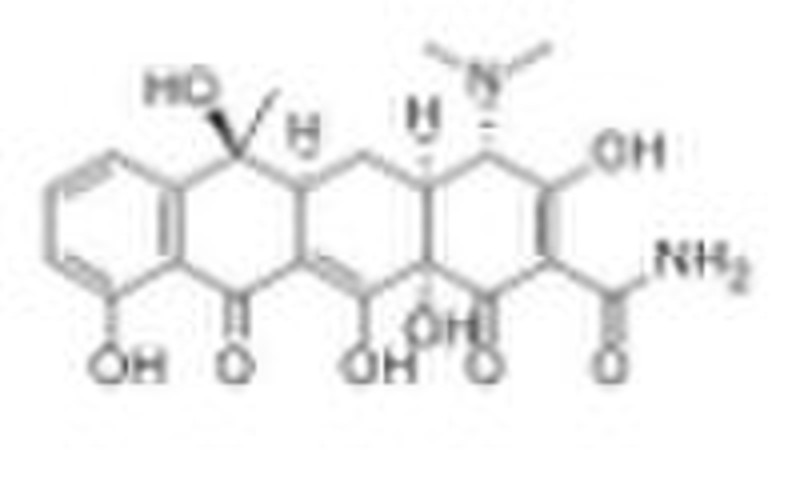Catalog
-
Catalog
- Agriculture
- Apparel
- Automobiles & Motorcycles
- Beauty & Personal Care
- Business Services
- Chemicals
- Construction & Real Estate
- Consumer Electronics
- Electrical Equipment & Supplies
- Electronic Components & Supplies
- Energy
- Environment
- Excess Inventory
- Fashion Accessories
- Food & Beverage
- Furniture
- Gifts & Crafts
- Hardware
- Health & Medical
- Home & Garden
- Home Appliances
- Lights & Lighting
- Luggage, Bags & Cases
- Machinery, Hardware & Tools
- Measurement & Analysis Instruments
- Mechanical Parts & Fabrication Services
- Minerals & Metallurgy
- Office & School Supplies
- Packaging & Printing
- Rubber & Plastics
- Security & Protection
- Service Equipment
- Shoes & Accessories
- Sports & Entertainment
- Telecommunications
- Textiles & Leather Products
- Timepieces, Jewelry, Eyewear
- Tools
- Toys & Hobbies
- Transportation
Filters
Search
Tetracycline

Quincey Cheung
Contact person
Basic Information
Tetracycline is a broad-spectrum polyketide antibiotic produced by the Streptomyces genus of Actinobacteria, indicated for use against many bacterial infections. It is a protein synthesis inhibitor. It is commonly used to treat acne today, and, more recently, rosacea, and played a historical role in reducing the incidence of mortality because of cholera. It is sold under the brand names Sumycin, Terramycin, Tetracyn, and Panmycin, among others. Actisite is a thread-like fiber form, used in dental applications. It is also used to produce several semi-synthetic derivatives, which together are known as the tetracycline antibiotics. Mechanism of action Tetracyclines bind to the 30S subunit of microbial ribosomes. They inhibit protein synthesis by blocking the attachment of charged aminoacyl-tRNA. Thus they prevent introduction of new amino acids to the nascent peptide chain. The action is usually inhibitory and reversible upon withdrawal of the drug. Resistance to the tetracyclines results from changes in permeability of the microbial cell envelop . In susceptible cells, the drug is concentrated from the environment and does not readily leave the cell . In resistant cells, the drug is not actively transported into the cell or leaves it so rapidly that inhibitory concentrations are not maintained. This is often plasmid -controlled . Mammalian cells do not actively concentrate tetracyclines. Cautions, contraindications, side-effects Are as those of the tetracycline antibiotics group: Can stain developing teeth (even when taken by the mother during pregnancy) Can cause permanent teeth discoloration (yellow-gray-brown); infancy and childhood to eight (8) years old Inactivated by Ca2+ ion, not to be taken with milk, yogurt, and other dairy products Inactivated by aluminium, iron and zinc, not to be taken at the same time as indigestion remedies Inactivated by common antacids and over-the-counter heartburn medicines. Skin photosensitivity; exposure to the Sun or intense light is not recommended Drug-induced lupus, and hepatitis Can induce microvesicular fatty liver. Tinnitus May interfere with methotrexate by displacing it from the various protein binding sites Can cause breathing complications as well as anaphylactic shock in some individuals Should be avoided during pregnancy as it may affect bone growth of fetus. Passes into breast milk and is harmful to breast-fed infants, and should therefore be avoided during breastfeeding if possibleIndication It is first-line therapy for Rocky Mountain spotted fever (Rickettsia), Q fever (Coxiella), Psittacosis and Lymphogranuloma venereum (Chlamydia), and to eradicate nasal carriage of meningococci. Tetracycline tablets were used in the plague outbreak in India in 1992. Doxycycline is also one (of many) recommended drugs for chemoprophylatic treatment of malariain travels to areas of the world where malaria is endemic. Other uses Since tetracycline is absorbed into bone, it is used as a marker of bone growth for biopsies in humans. Tetracycline labeling is used to determine the amount of bone growth within a certain period of time, usually a period of approximately 21 days. Tetracycline is incorporated into mineralizing bone and can be detected by its fluorescence.In double tetracycline labeling, a second dose is given 11-14 days after the first dose, and the amount of bone formed during that interval can be calculated by measuring the distance between the two fluorescent labels. Tetracycline is also used as a biomarker in wildlife to detect consumption of medicine- or vaccine-containing baits. In genetic engineering, tetracycline is used in transcriptional activation. Tetracycline is also one of the antibiotics used to treat ulcers caused by bacterial infections. In cancer research at Harvard Medical School, tetracycline has been used to reliably cause regression of advanced stages of leukemia in mice, by placing it in their drinking water. Cell culture
Delivery terms and packaging
Packaging Detail: 25kg/bag, according to customers' requests Delivery Detail: as soon as possible
Port: Shanghai
Payment term
Documents Against Acceptance
Documents Against Payment
Letter of credit
Telegraphic transfer
-
Payment Methods
We accept:









